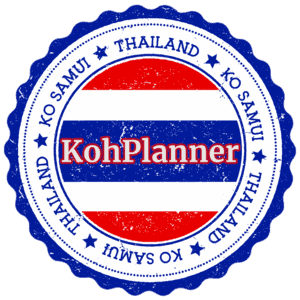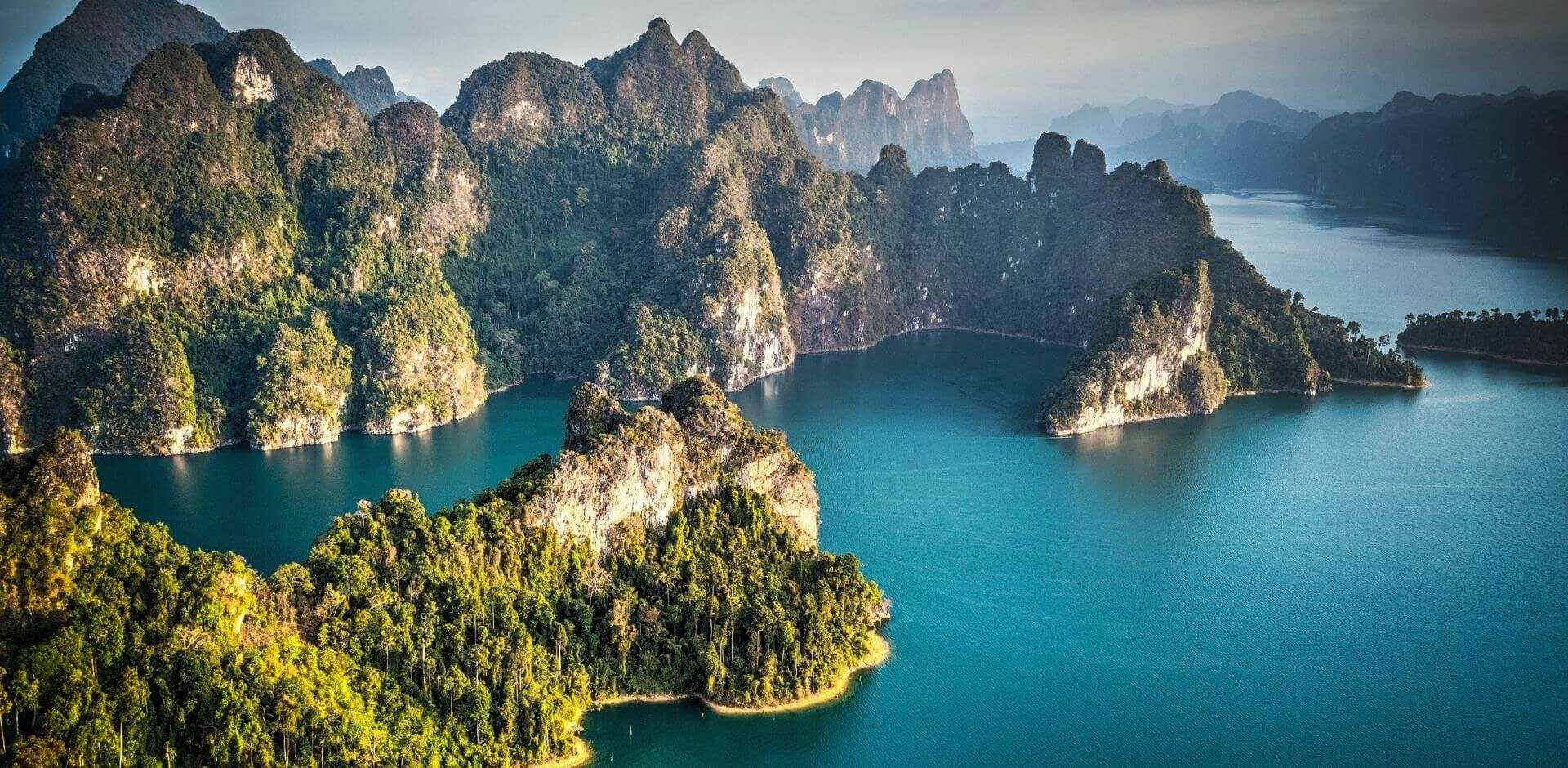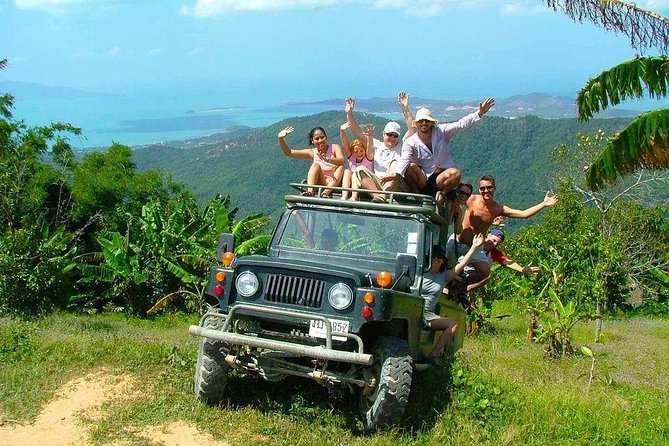18 National Parks in Thailand You Don’t Want to Miss
Thailand, with its mesmerizing natural beauty, diverse landscapes, and rich cultural heritage, boasts a remarkable collection of national parks that serve as gateways to its unique ecosystems and wildlife. Established to protect and preserve the country's biodiversity, historical sites, and natural resources, these national parks not only contribute to Thailand's conservation efforts but also provide visitors with unforgettable experiences that showcase the very essence of the nation's charm.
With over 150 national parks scattered throughout the country, Thailand's protected areas serve multiple objectives, including promoting environmental awareness, preserving endangered species, and supporting sustainable tourism. They offer a wealth of opportunities for both nature enthusiasts and casual visitors to engage in activities such as hiking, birdwatching, wildlife spotting, scuba diving, and cultural exploration. While visiting these parks, it is crucial for travelers to respect the local flora and fauna, adhere to park regulations, and minimize their impact on the environment.
When exploring Thailand's national parks, it's essential to be mindful of your surroundings and follow park guidelines. This includes staying on designated trails, not feeding wild animals, and avoiding activities that may disturb the delicate balance of ecosystems. By respecting these rules, visitors can help ensure that these natural treasures remain pristine for future generations to enjoy.
The establishment and management of national parks in Thailand have had a positive impact on local communities and the economy. They provide opportunities for sustainable livelihoods through ecotourism and support the preservation of cultural heritage sites, which in turn attracts more visitors to the country. Moreover, these parks serve as essential habitats for many endangered species, playing a crucial role in their conservation and the overall health of Thailand's ecosystems.
As you embark on your journey to explore Thailand's breathtaking national parks, prepare to be captivated by the sheer diversity of landscapes, wildlife, and cultural experiences that await you. From lush rainforests and pristine beaches to ancient ruins and vibrant marine life, these protected areas offer a window into the heart of Thailand's natural splendor and cultural richness.
Khao Sok National Park (Surat Thani Province)

Located in the Surat Thani Province, Khao Sok National Park is arguably the most popular and well-known national park in Thailand. Established in 1980, it covers an area of 739 square kilometers and is characterized by its lush rainforest, towering limestone cliffs, and the breathtaking Cheow Lan Lake.
To get to Khao Sok, you can take a bus or minivan from major cities such as Bangkok, Phuket, and Krabi. The park's diverse ecosystem is home to various wildlife, including gibbons, langurs, Malayan sun bears, and the rare Rafflesia flower – the world's largest bloom. Additionally, the park is a sanctuary for endangered species like the Asian elephant and the Indochinese tiger.
Khao Sok offers a variety of activities, such as trekking, canoeing, and wildlife spotting. For accommodations, visitors can stay in treehouses, floating bungalows, or local guesthouses.
Doi Inthanon National Park (Chiang Mai Province)

Doi Inthanon National Park, located in Chiang Mai Province, is often referred to as the "Roof of Thailand." Established in 1972, the park encompasses 482 square kilometers and is home to Doi Inthanon, the country's highest peak at 2,565 meters above sea level. The park boasts a diverse range of flora and fauna, including over 400 bird species and numerous orchids.
To reach Doi Inthanon, you can take a bus from Chiang Mai city or rent a car or motorbike. The park offers various attractions, including the stunning Twin Royal Pagodas, waterfalls, and several trekking trails. For accommodations, visitors can stay at the park's campsite or in nearby guesthouses and resorts.
Erawan National Park (Kanchanaburi Province)

Established in 1975, Erawan National Park is situated in Kanchanaburi Province and covers an area of 550 square kilometers. The park is named after the three-headed elephant from Hindu mythology, as its main attraction, the seven-tiered Erawan Waterfall, is said to resemble the creature.
To get to Erawan National Park, you can take a bus or train from Bangkok to Kanchanaburi and then a local bus to the park. Besides the waterfall, the park offers hiking trails and several caves to explore. Accommodations include a campsite and bungalows within the park, as well as guesthouses and resorts nearby.
Khao Yai National Park (Nakhon Ratchasima Province)

Khao Yai National Park, established in 1962, is Thailand's first national park and a UNESCO World Heritage Site. Covering an area of 2,168 square kilometers, the park spans across four provinces, with its headquarters in Nakhon Ratchasima. Khao Yai is known for its diverse wildlife, including wild elephants, gibbons, and hornbills.
To reach Khao Yai, you can take a bus from Bangkok to Pak Chong and then hire a taxi or motorbike to the park. The park offers several hiking trails, waterfalls, viewpoints, and wildlife watching opportunities. For accommodations, visitors can choose from campsites, bungalows, and guesthouses within the park or stay in nearby hotels and resorts.
Mu Ko Ang Thong National Park (Surat Thani Province)

Mu Ko Ang Thong National Park is an archipelago of 42 islands in the Gulf of Thailand. Established in 1980, the park covers an area of 102 square kilometers and is renowned for its pristine beaches, crystal-clear waters, and rich marine life.
To get to Mu Ko Ang Thong, you can take a speedboat or ferry from Koh Samui or Koh Phangan. The park offers various activities such as snorkeling, kayaking, and hiking. You can also visit the Emerald Lagoon, a hidden saltwater lake. Accommodations include camping on designated islands or staying in nearby resorts on Koh Samui or Koh Phangan.
Kaeng Krachan National Park (Phetchaburi Province)

Kaeng Krachan National Park, established in 1981, is the largest national park in Thailand, covering an area of 2,914 square kilometers. Located in Phetchaburi Province, the park is known for its dense forests, diverse wildlife, and the impressive Pa La-U Waterfall.
To reach Kaeng Krachan, you can take a bus or train from Bangkok to Phetchaburi and then hire a taxi or minivan. The park offers various activities, including birdwatching, wildlife spotting, and trekking. For accommodations, visitors can stay in campsites, bungalows, or guesthouses within the park or nearby hotels and resorts.
Thung Salaeng Luang National Park (Phitsanulok and Phetchabun Provinces)

Thung Salaeng Luang National Park, established in 1963, is located in Phitsanulok and Phetchabun Provinces. Covering an area of 1,262 square kilometers, the park is characterized by its vast grasslands, pine forests, and unique geological formations.
To get to Thung Salaeng Luang, you can take a bus from Bangkok to Phitsanulok or Phetchabun and then hire a taxi. The park offers several attractions, including the Kaeng Sopha Waterfall, the Lan Hin Pum rock formations, and various trekking trails. Accommodations include campsites, bungalows, and guesthouses within the park or nearby hotels and resorts.
Khao Sam Roi Yot National Park (Prachuap Khiri Khan Province)

Established in 1966, Khao Sam Roi Yot National Park is located in Prachuap Khiri Khan Province and covers an area of 98.08 square kilometers. The park is famous for its limestone hills, mangrove forests, and freshwater marshes.
To reach Khao Sam Roi Yot, you can take a train or bus from Bangkok to Prachuap Khiri Khan and then hire a taxi. The park offers several attractions, including the Phraya Nakhon Cave, the Kaeo Cave, and the Thung Sam Roi Yot wetlands. Accommodations include campsites, bungalows, and guesthouses within the park or nearby hotels and resorts.
Mu Ko Similan National Park (Phang Nga Province)

Mu Ko Similan National Park is an archipelago of nine granite islands in the Andaman Sea. Established in 1982, the park covers an area of 140 square kilometers and is a world-renowned diving destination due to its vibrant coral reefs and diverse marine life.
To get to Mu Ko Similan, you can take a speedboat or liveaboard from Phuket, Khao Lak, or Ranong. The park offers various activities such as scuba diving, snorkeling, and hiking. You can also visit the famous Sail Rock viewpoint. Accommodations include camping on designated islands or staying in nearby resorts on Phuket or Khao Lak.
Khao Luang National Park (Nakhon Si Thammarat Province)

Khao Luang National Park, established in 1974, is situated in Nakhon Si Thammarat Province and covers an area of 570 square kilometers. The park is home to Khao Luang, the highest peak in southern Thailand, standing at 1,835 meters above sea level.
To reach Khao Luang National Park, you can take a bus or train from Bangkok to Nakhon Si Thammarat and then hire a taxi. The park boasts a diverse range of flora and fauna, including over 300 bird species and the rare Rafflesia kerrii flower. Visitors can enjoy hiking trails, waterfalls, and wildlife watching. Accommodations include campsites, bungalows, and guesthouses within the park or nearby hotels and resorts.
Kui Buri National Park (Prachuap Khiri Khan Province)

Kui Buri National Park, established in 1999, is situated in Prachuap Khiri Khan Province and covers an area of 969 square kilometers. The park is known for its successful wildlife conservation efforts, particularly for the wild elephants and gaurs that roam freely.
To reach Kui Buri, you can take a bus or train from Bangkok to Prachuap Khiri Khan and then hire a taxi. The park offers wildlife watching, particularly at the Pa Yang and Huai Luek wildlife watching towers. Accommodations include campsites, bungalows, and guesthouses within the park or nearby hotels and resorts.
Mu Ko Surin National Park (Phang Nga Province)

Mu Ko Surin National Park is an archipelago of five islands in the Andaman Sea. Established in 1981, the park covers an area of 141.25 square kilometers and is renowned for its coral reefs, clear waters, and the unique Moken sea-gypsy community.
To get to Mu Ko Surin, you can take a speedboat from Khuraburi pier in Phang Nga Province. The park offers activities such as snorkeling, scuba diving, and visiting the Moken village. Accommodations include camping on designated islands or staying in nearby resorts on the mainland.
Ao Phang Nga National Park (Phang Nga Province)

Ao Phang Nga National Park, established in 1981, is located in Phang Nga Province and covers an area of 400 square kilometers. The park is famous for its limestone karst formations, mangrove forests, and the iconic James Bond Island, featured in the 1974 film, "The Man with the Golden Gun."
To reach Ao Phang Nga, you can take a bus from Bangkok to Phang Nga and then hire a taxi or join a guided tour. The park offers activities such as kayaking, island hopping, and visiting the Tham Lod cave. Accommodations include nearby hotels and resorts in Phang Nga or Phuket.
Doi Suthep-Pui National Park (Chiang Mai Province)

Doi Suthep-Pui National Park, established in 1981, is located in Chiang Mai Province and covers an area of 261 square kilometers. The park is home to the famous Wat Phra That Doi Suthep temple, the Hmong hill tribe village, and several waterfalls.
To get to Doi Suthep-Pui, you can take a songthaew (a shared taxi) or rent a motorbike from Chiang Mai city. The park offers hiking trails, waterfalls, and cultural experiences. Accommodations include campsites, bungalows, and guesthouses within the park or nearby hotels and resorts in Chiang Mai.
Si Satchanalai National Park (Sukhothai Province)

Si Satchanalai National Park, established in 1981, is situated in Sukhothai Province and covers an area of 213 square kilometers. The park is home to the Si Satchanalai Historical Park, which features well-preserved ancient ruins from the Sukhothai Kingdom.
To reach Si Satchanalai, you can take a bus from Bangkok to Sukhothai and then hire a taxi or rent a motorbike. The park offers cultural and historical experiences, as well as hiking trails and waterfalls. Accommodations include nearby hotels and resorts in Sukhothai.
Mu Koh Lanta National Park (Krabi Province)

Mu Koh Lanta National Park, established in 1990, is located in Krabi Province and encompasses an archipelago of 52 islands, including Koh Lanta Yai and Koh Lanta Noi. The park covers an area of 134 square kilometers and is known for its pristine beaches, mangrove forests, and diverse marine life.
To get to Mu Koh Lanta, you can take a ferry from Krabi or Phuket. The park offers activities such as snorkeling, scuba diving, and exploring the Mai Kaew Cave. Accommodations include camping on designated islands, as well as numerous hotels and resorts on Koh Lanta Yai.
Khao Phanom Bencha National Park (Krabi Province)

Khao Phanom Bencha National Park, established in 1987, is situated in Krabi Province and covers an area of 50 square kilometers. The park features dense forests, limestone mountains, and the impressive Huai To Waterfall.
To reach Khao Phanom Bencha, you can take a bus from Bangkok to Krabi and then hire a taxi or rent a motorbike. The park offers hiking trails, wildlife watching, and swimming at the waterfall. Accommodations include campsites, bungalows, and guesthouses within the park or nearby hotels and resorts in Krabi.
Namtok Phlio National Park (Chanthaburi Province)

Namtok Phlio National Park, established in 1975, is located in Chanthaburi Province and covers an area of 134.5 square kilometers. The park is famous for its Phlio Waterfall, surrounded by lush forests and unique flora, such as the rare Siamese sal tree.
To get to Namtok Phlio, you can take a bus from Bangkok to Chanthaburi and then hire a taxi or rent a motorbike. The park offers hiking trails, swimming at the waterfall, and visiting the historical Phra Chedi Klang Nam stupa. Accommodations include campsites, bungalows, and guesthouses within the park or nearby hotels and resorts in Chanthaburi.
A BIODIVERSITY PARADISE
Thailand's national parks offer an incredible array of landscapes, flora, and fauna that showcase the country's rich biodiversity. From the dense rainforests of Khao Sok and the pristine beaches of Mu Ko Similan to the cultural heritage of Si Satchanalai and the unique limestone formations of Ao Phang Nga, each park presents a distinctive experience that highlights the country's natural beauty.
With this extensive list of national parks in Thailand, there is something for every type of tourist. Nature enthusiasts can explore the diverse ecosystems and witness rare species, while adventure-seekers can embark on thrilling activities such as hiking, scuba diving, and kayaking. Those who appreciate history and culture can visit ancient ruins and learn about Thailand's indigenous communities, and travelers seeking relaxation can unwind on picturesque beaches and swim in crystal-clear waters.
Visiting a national park in Thailand is a must for any traveler seeking to truly immerse in the country's natural splendor and cultural heritage. When planning your next trip to Thailand, make sure to save in your KohPlanner Travel Plans, a visit to one of these stunning national parks to witness the diverse and breathtaking beauty of this incredible country.



